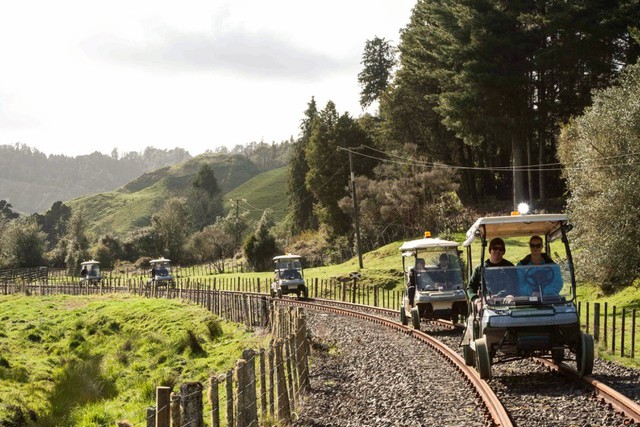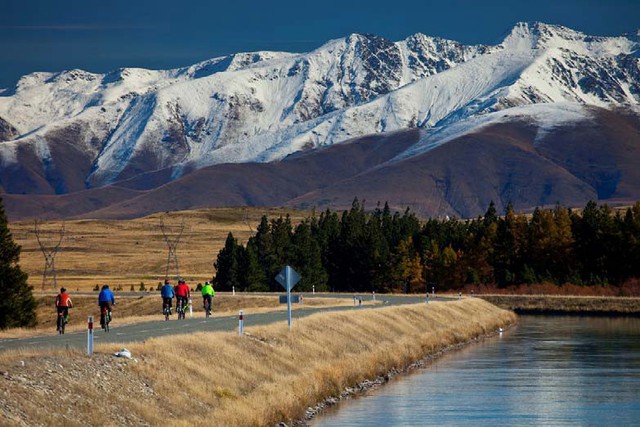
Lessons learned from innovative tourism start-ups
Lessons learned from innovative tourism start-ups
As part of work I have been doing on the potential tourism impacts of the Mahia Rocket Lab project (https://rocketlabusa.com/category/rocket-lab-news/) I have relooked at a number of tourism start ups I have been involved with. These include a wide range of successful and innovative tourism start-ups, as well as some that had failed to take off. Whilst every innovation is different, there are considerable lessons that can be learned from over 30 years’ involvement in tourism development.
Examples of relevance include:
Forgotten World Adventures
www.forgottenworldadventures.co.nz
This tourism concept of riding golf carts along the disused Taumarunui to Whangamomona railway line in the heart of the North Island now hosts over 6,000 visitors a year. The company started in 2012 and now offers a range of products expanding on the original tunnel-rail trail day trip .FWA is now a significant economic driver for the Taumarunui area.
Whale watching at Kaikoura
This well-established Māori owned and managed whale watching company was formed in 1987. The award winning company combines Manaakitangi (hosting) with state of the art technology , guides and boats. Whale Watch Kaikoura now hosts over 100,000 visitors a year. The community-owned trust turns over $10 million annually. The business has helped create over 100 related businesses in the Kaikoura area.
Nga Haerenga, The New Zealand Cycle Trail
Photo: The Alps to Ocean Cycle Trail, courtesy of Colin Monteath
NZ Great Rides was an innovative idea that came out of the NZ Job Summit in 2009, during the Global Financial Crisis. Regarded as somewhat improbable by many, the concept was to build on the success of the Otago Central Rail Trail. This 150km multi (3-4) day cycle trail was developed in 2000 and within 10 years had become a very successful tourism attraction that created many small to medium sized enterprises (SMEs) and tourism operations in a declining rural community. With over 12,000 cyclists spending several days in the area,, plus over 50,000 day cyclists and walkers the Otago Central Rail Trail is regarded as a very successful concept.
The NZ Cycle Trail evolved this idea into 23 Great Rides throughout New Zealand. Over $100 million has been spent by local and central government on infrastructure. Many of these Great Rides are now established, open for business, and creating jobs and SMEs in rural communities such as Ohakune, Pipiriki, Westport and Seddonville.
Wildlife Island Sanctuaries
There are several large scale, fenced wildlife sanctuaries in New Zealand. These include Zealandia and Sanctuary Mountain Maungatautari. These innovative wildlife sanctuaries focus on the protection of large forest and wildlife reserves. They have all relied on a mixture of government, donor and private sector funding. A core assumption has been that tourism will partially or completely fund the operations of these island reserves. With capital costs exceeding, at times $15 million and operating costs in the tens of thousands, these reserves, while innovative, have often struggled financially. The conservation benefits have been widely applauded.
Other innovative tourism products that I have drawn lessons from include: Kapiti Island Nature Lodge, AJ Hackett’s Bungy Jump, Hobbiton the Te Araroa Trail and large scale adventure races such as the Eco-Challenge. Lessons learned have included:
- Ideas (such as the examples above) need champions/leaders who drive the concept
- Successful innovations, eg Kaikoura, Hobbiton, Te Papa, can transform communities, and quickly
- Successful innovators understand the markets - by good research (which is sometimes not possible if the concept is new), by intuition or by trialling or testing the market
- Innovative product development often needs nimble and decisive changes to the product in the early development stages
- Usually local and/or national government is best to help enable the concept (e.g. RMA approvals or policy support) rather than being the developer of the idea
- Initial government grants for innovators can be effective
- Involving the community at the start of the project, whilst sometimes challenging for new ideas, is important. Innovative projects have had lots of doubters, e.g. Hobbiton, Whale Watching, Kapiti Island Nature Lodge, the NZ Cycleway. Sharing the concept but remaining focused on it is crucial
- Often financing an innovative tourism concept is not a major constraint. It is the belief and commitment by the developers that is required
- Moving from the initial start-up of the tourism idea to its ongoing management with systems, staff delegation and back-of-house support can be a challenge, especially for the initial innovator
- Successful innovators are sometimes, at the initial stages, over-focused on protecting their idea rather than on the start-up.
Posted: Saturday 23 July 2016

